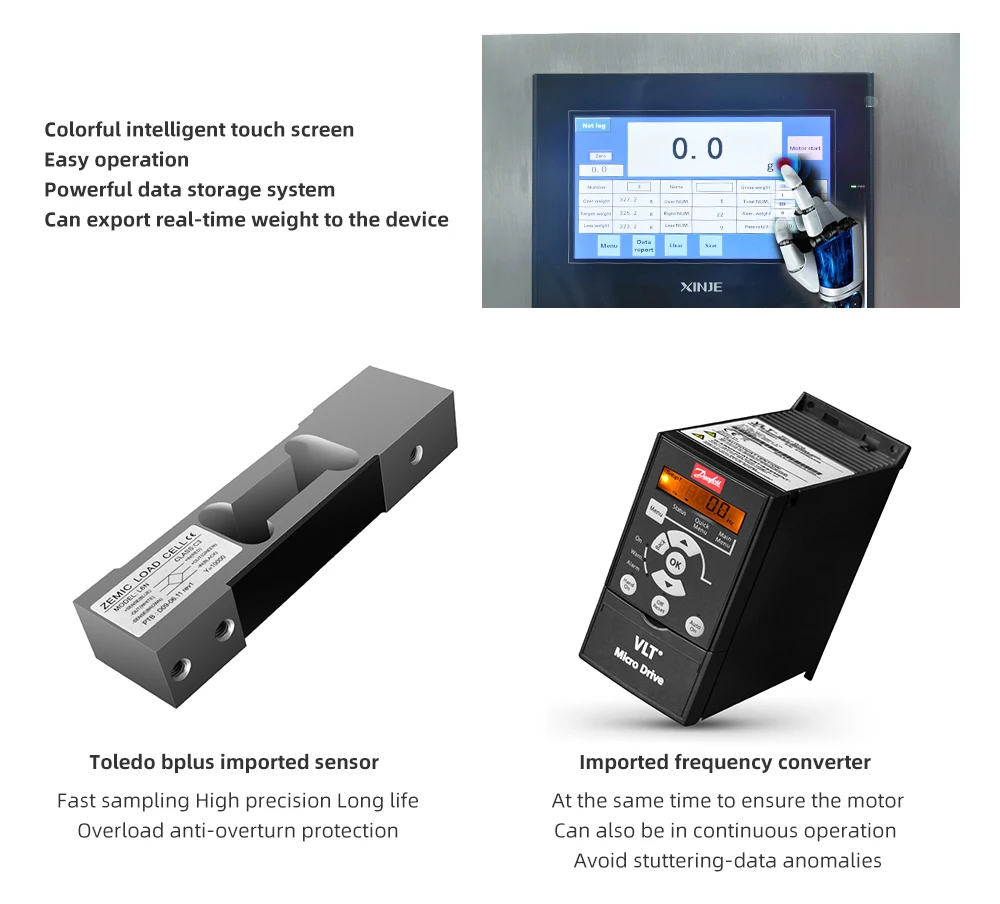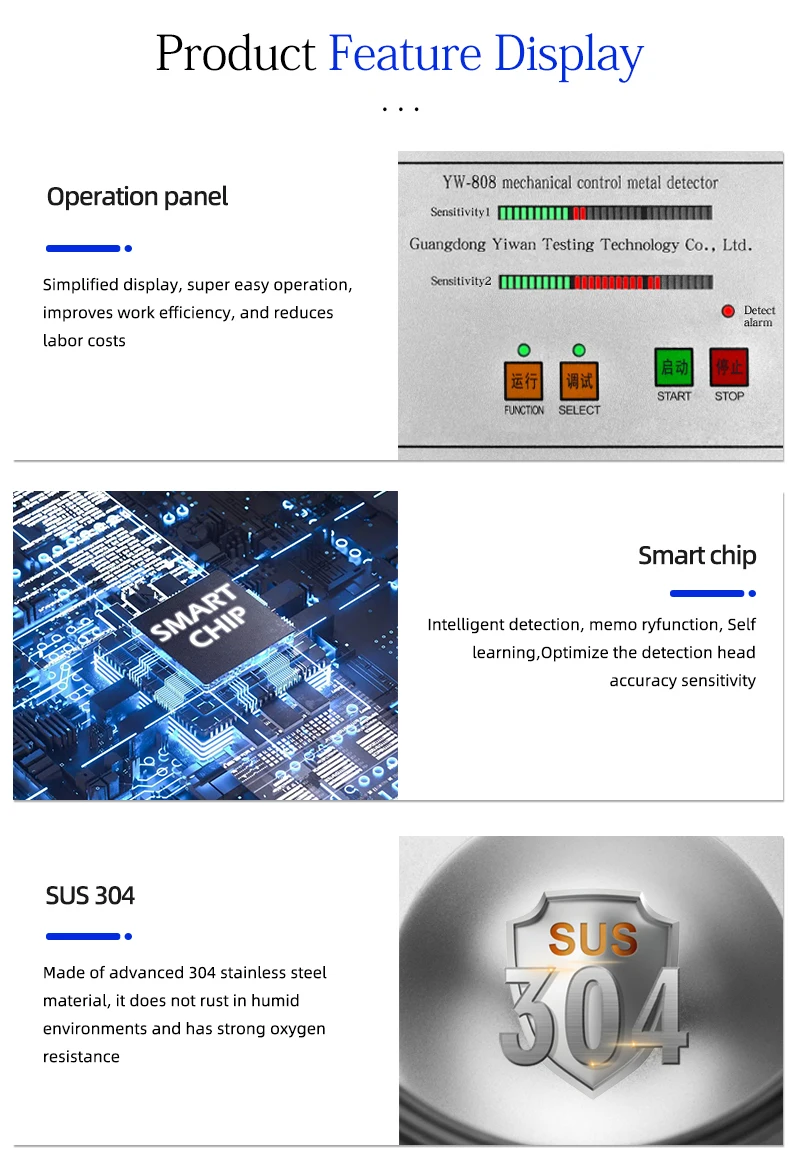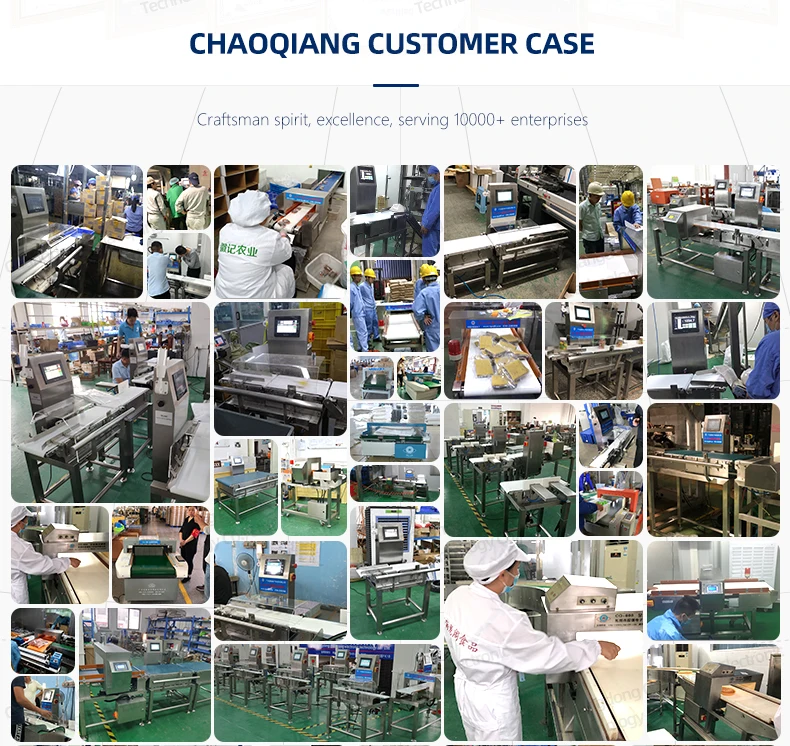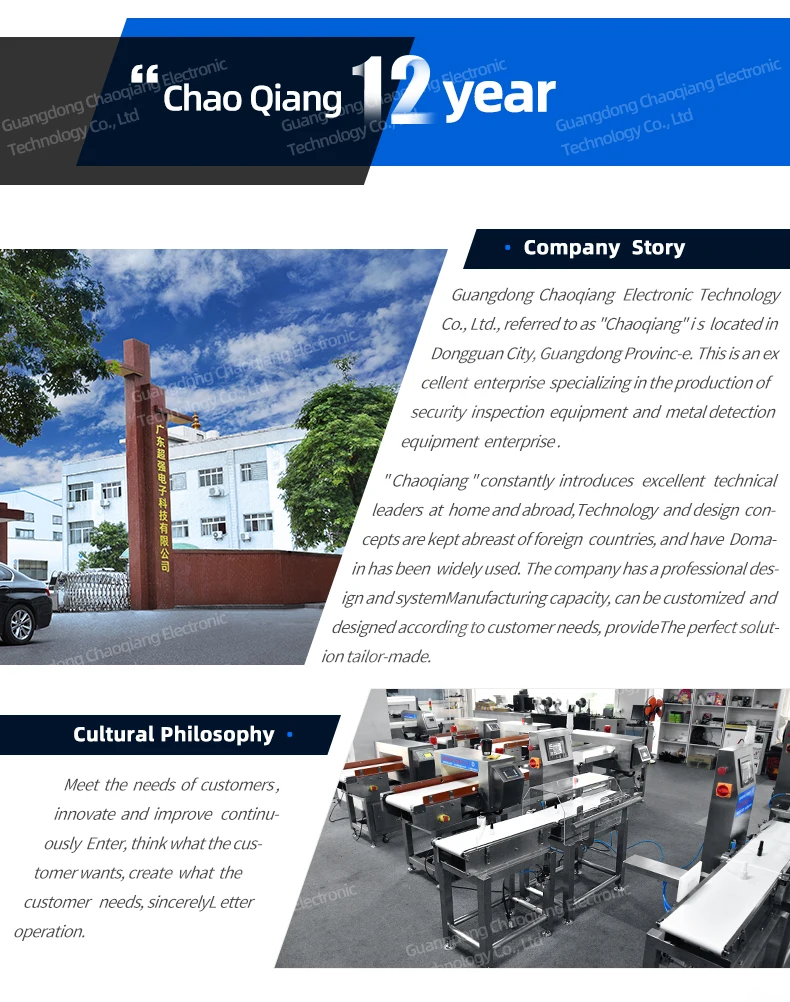Views: 0 Author: HUA Publish Time: 2024-10-28 Origin: Site








Food metal detectors play a vital role in the modern food industry and are indispensable.
As people's living standards continue to improve, their attention to food safety is also increasing. Food metal detectors can detect metal impurities in food in a timely manner and effectively prevent safety accidents caused by metal foreign matter mixed into food. According to statistics, there are many consumer injuries caused by metal foreign matter mixed into food every year. The existence of metal detectors is like a solid line of defense to protect the health of consumers.
In terms of improving food quality, metal detectors have made an indelible contribution. It can ensure product quality from the source, and exclude defective and unqualified foods by testing raw materials, finished products, intermediate processed products, etc. For example, in the food production process, metal detectors can detect metal foreign matter such as screws and nuts, tool fragments, etc. on production equipment to prevent these foreign matter from mixing into food and affecting product quality. At the same time, after strict screening by metal detectors, the overall quality level of products can be improved and market competitiveness can be enhanced.
Consumer trust is the key to the survival and development of enterprises. By using food metal detectors, enterprises can better ensure the safety and quality of food, thereby enhancing consumer trust and satisfaction with products. When consumers know that a company uses advanced metal detectors to ensure food safety during the production process, they will be more willing to buy the company's products. This is of great significance to the company's brand building and market expansion.
In summary, food metal detectors are of irreplaceable importance in the modern food industry. It can not only prevent the occurrence of safety accidents, but also improve food quality and consumer trust, providing strong guarantees for the healthy development of the food industry.

Food metal detectors use the principle of electromagnetic induction to detect metal. When an alternating current passes through the transmitting coil in the detector, an alternating magnetic field is generated around it. When a metallic foreign body enters the detector, the magnetic field induces a current inside the metal object because metal is a conductor and can respond to external magnetic field changes. The induced current inside the metal object will generate its own magnetic field, which in turn affects the transmitting coil. The receiving coil in the detector detects this changing magnetic field and converts the signal into an electrical signal. After amplification and filtering, the electrical signal can be recognized by the detector circuit. If the size, shape or position of the metal object is large enough to cause a large enough electromagnetic change in the detector coil, the detector will send a signal.

2. Food processors use Selective Sweep to quickly and easily identify the single best frequency for an application. This technology eliminates product effects and corrects results for temperature variations and electromagnetic interference. It also provides documentation of results for each production run. Selective Sweep can detect metal foreign bodies up to 25% smaller than previously possible with single-frequency technology. Automatic phase relearning resynchronizes product phases after long downtime or large temperature changes, for example, without having to press a single button to avoid false rejects. Applications such as potato chips or cheese may require a lower frequency to control the signal generated by conductive salt content, while a higher frequency may be more suitable for detecting stainless steel components in mineral-rich vegetables. Selective Sweep can detect the full frequency range from 50 to 1000 kHz, ensuring that the best frequency is selected for each application.

3.Automatic learning eliminates the uncertainties associated with optimizing detection performance. With an intuitive on-screen wizard, users can efficiently complete a streamlined setup within minutes. An operating frequency can then be employed to detect even the smallest metal contaminants tailored to specific applications. Uncontaminated food will seamlessly pass through the detector orifice, while iron, non-ferrous, and stainless steel metal balls of predetermined sizes are introduced into the product stream and subsequently passed through the detector orifice for data capture and processing. Utilizing this data, the automatic learning function identifies the optimal detection frequency and automatically configures all sensitivity parameters accordingly. Furthermore, a unique visual graph scoring algorithm illustrates the detectability of each metal ball throughout the production process. By incorporating additional samples during automatic learning, this algorithm can refine settings with enhanced precision, alleviating concerns regarding product safety for users. In contrast, configuring a traditional single fixed-frequency metal detector is a labor-intensive endeavor that necessitates extensive experimentation and is prone to errors; at each new frequency setting, a skilled operator may invest hours in adjusting and testing the metal detector to ascertain compliance with inspection specifications."


Online weighing machines can perform repeatability tests to meet customers' strict requirements. In various industries, customers have higher and higher requirements for product quality, especially in terms of product weight. Online weighing machines can achieve high-precision and repeatable testing to ensure that the weight of the product meets customer requirements. For example, in the production of medical devices, the weight of the product must be accurate, otherwise it may affect the performance and safety of the medical device. By using online weighing machines, companies can meet customers' strict requirements and improve the market competitiveness of their products.



FAQ



